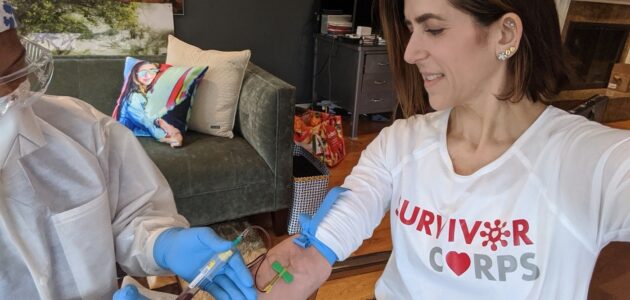The plasma donation process involves giving your blood twice as much as usual. A typical session consists in drawing a blood sample, and a technician will take an example to check the protein and hematocrit levels. The technician will prepare your arm with antiseptic to minimize the risk of infection. The process includes collecting blood and separating plasma. After the procedure, the blood is returned to the body, and the red cells are recycled. However, there are risks involved in plasma donation.
While blood donations can save two or three lives, plasma donation can help create treatments that improve the quality of life of people with a variety of illnesses. The process of blood donation is simple, but the impact is significant. When you donate blood, you’re helping make a difference in someone’s life. Donating plasma is a straightforward and rewarding experience. If you’re considering giving your blood, be sure to read the following information.
The procedure can be painful. In addition, some people may react to the citrate added to the blood during the process. This can cause cardiac arrest, shock, and seizures. This medication can also affect bone density and calcium-binding. If you’re considering donating plasma, you should consider the risks involved and how you can minimize them. If you’re in doubt about whether you should present your blood or not, consult with a physician. This donation will help save a life and may even save yours.
Bruising and discomfort are common side effects of plasma donation. The process of donating plasma can be painful and requires a time commitment. While you can present twice in seven days, donating whole blood requires less time. In addition, you can give blood only once every eight weeks. When you donate your blood, it will be processed by machines. In addition, you will receive compensation for your donation. If you decide to donate your blood, you’ll be reimbursed for your time and effort.
During the plasma donation process, you’ll need to be in good health and free of any medical conditions. This procedure involves a series of screenings. In addition, your blood must be free of infections and other toxins for your safety. Donating plasma is the best way to give your blood to patients in need. You’ll be able to save lives. There’s no better reason to donate than to help someone in need.
When you donate your blood, you’ll notice that the blood will appear bright red. If this occurs, you should apply pressure to the bleeding area. If the bleeding is too severe, stop the donation immediately and contact emergency medical services. If bleeding occurs, you should seek medical help. A donor should not be afraid to refuse treatment. The blood will be removed in a few hours. The patient will be provided with life-saving medicine. They’ll be thankful to receive the donation, and you’ll be doing your part to help others.
Though plasma donation poses a small risk of serious problems, it is essential to remember that it involves blood drawing. A needle puncture is an opportunity for bacteria to enter the body. Infections can lead to inflammation, a rash, or fever. If you have a severe illness, contact the center and the donation center immediately. During the process, you may feel a pulsating sensation. An ache or fever should accompany the pain you feel.
The process of plasma donation is painless and straightforward. The process takes slightly longer than blood donation. The blood is separated from the red blood cells and other blood components. The plasma is returned to the donor after the process. The procedure is safe and requires little to no side effects. You can donate plasma to people in need by contacting your local Canadian Blood Services. You can donate your blood in two ways. First, you can choose to donate your blood by visiting your nearest CBSS. The CBSS website offers more information about this research.
Plasma donation is not as simple as blood donation. There are several differences between the two processes, but both methods are essential. When you donate blood, you have to meet the requirements of blood donors. The FDA wants to ensure that blood is free of toxins. If you don’t, your plasma will be donated to patients in need. If you’re in a position to donate plasma, you should consider this process carefully. If you have any questions, you should contact Vitalant.






